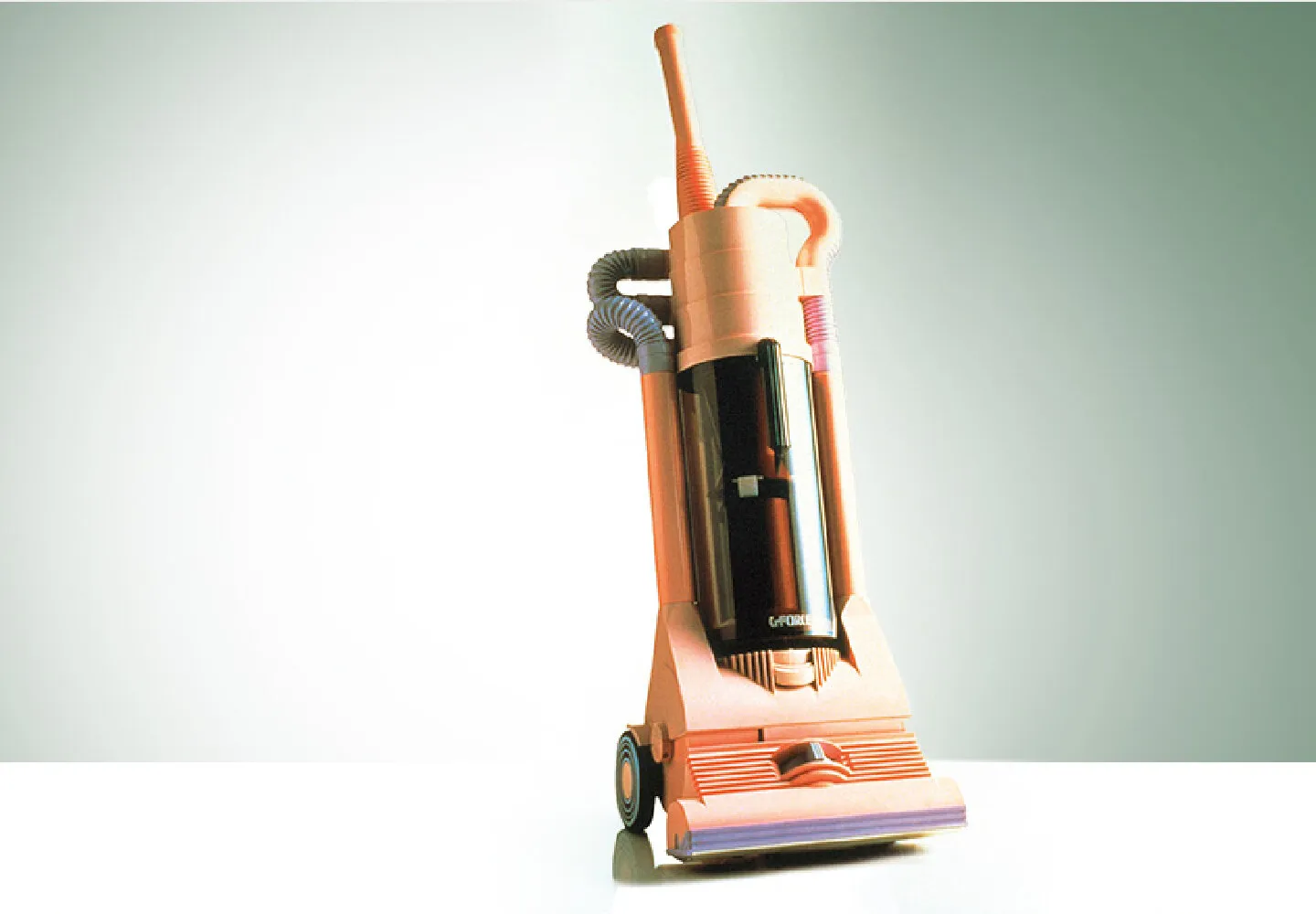There can be your advertisement
300x150
Stubbornness Worth Billions: How James Dyson Changed the Cleaning World by Creating 5,127 Failed Vacuums
How the Dyson Empire Was Born
Imagine this: You've spent all your savings, gone into debt, your wife barely makes ends meet on her teacher's salary, and you've been assembling and disassembling vacuum cleaners in the garage for five years running. Neighbors roll their eyes, manufacturers laugh at you in the face, and bankers demand repayment of loans. But you keep believing in your idea. Madness? Maybe. But that's exactly how the Dyson empire was born, and its creator became one of Britain's richest men.
It all started with disappointment
In 1978, James Dyson, an engineer from the British town of Cromer, bought himself a Hoover Junior — the most powerful vacuum cleaner of its time. It seemed like an ordinary household purchase, but it changed his entire life.
Very soon, Dyson noticed that the suction power of the vacuum cleaner dropped rapidly. The dust bag clogged quickly, and the device performed worse at its task. When the bag tore, Dyson was thoroughly disappointed in the design.
Instead of simply buying a new bag, as most of us would do, Dyson asked himself: 'Why does this vacuum need a bag at all? Why hasn’t anyone created a vacuum without one yet?'
Soon, he realized the reason: it was profitable for manufacturers to sell replacement bags. It was a lucrative business — in Britain alone, sales reached over 100 million pounds per year, and globally, more than a billion dollars. Why improve something that brings stable income?
Inspiration from the sawmill
One day, Dyson visited a local sawmill where he noticed a cyclone system for removing sawdust. The system created a vortex in which heavy particles were separated from the air under the influence of centrifugal force.
"What if we apply this principle to a vacuum cleaner?" Dyson thought. Right away, he glued together a simple prototype from a cereal box. And — Eureka! — the idea worked!
5,127 failures in a row
But the journey from a cardboard model to a working device was long. Dyson spent the next five years (according to some sources, even fifteen) creating and testing prototypes in his garage.
Each day was much like the previous one: wake up, work on a new model, encounter another problem, and start over. And so 5,127 times! Anyone else would have given up long ago.
"I wasn’t afraid of bankruptcy — with my hands and head, I wouldn’t disappear, but I was afraid of losing my home," Dyson admitted later in an interview. His wife supported him, continuing to believe in him even as debts grew like yeast.
All doors closed
When in 1983 Dyson finally created a working prototype, he was confident that appliance manufacturers would line up to adopt his invention. But reality turned out to be harsh.
No British or American company wanted to produce a vacuum that would eliminate their profit from bag sales. "If there was a better vacuum, Hoover or Electrolux would have invented it," skeptics told Dyson.
Rescue came from Japan
Unexpectedly, interest in Dyson’s invention emerged in Japan. In 1986, a small Japanese company, Apex Ltd., acquired the license to manufacture the G-Force vacuum cleaner.
Despite its astronomical price of 2,000 pounds (over 4,000 dollars at the time), the bright pink vacuum became a hit among wealthy Japanese. In a country where technological innovation is always held in high regard, G-Force even became a status symbol. In 1991, the invention received a prestigious design award.
Licensing fees from Japanese sales became Dyson’s lifeline. He finally had the money to invest in building his own production facility.
 Photo: news-geeks.ru
Photo: news-geeks.ruThe Birth of an Empire
In 1991, having spent nearly all his Japanese money, Dyson founded Dyson Appliances Ltd. In 1993, he built his own factory in North Wilts, United Kingdom.
The first vacuum cleaner under the name Dyson DC01 appeared on the British market in the same year. The vibrant violet-yellow design and revolutionary Dual Cyclone technology immediately attracted attention.
At first, many stores refused to sell the strange and expensive bagless vacuum. But Dyson was persistent. According to legend, after meeting with high-ranking British politician Richard How, who helped him get into the major retail chain Comet, sales skyrocketed.
By 1995, just two years after its launch, the Dyson vacuum became the best-selling in Britain, outpacing those same companies that had once rejected its idea.
 Photo: kotkod.ru
Photo: kotkod.ruIt Was Only the Beginning
The success of the first model was just the start. Dyson continued to refine his invention, launching new, even more efficient models.
The company expanded its range by adding washing machines (though not very successful), hand dryers Airblade, bladeless fans Air Multiplier, hair dryers, and many other innovative devices.
Today, James Dyson is Sir James, honored with a knighthood by Queen Elizabeth II, and one of the richest men in Britain with a net worth of 23 billion pounds (according to Sunday Times for 2023).
His branded vacuum cleaners are sold in more than 65 countries worldwide, and the Dyson company has become a symbol of innovation and quality.
Lessons in Stubbornness
The story of James Dyson is not just a tale of success, it's a lesson in extraordinary persistence and faith in one’s own ideas.
"Failure is an interesting phenomenon, without which there can be no forward movement. You cannot learn something from success, but you can definitely learn from failure," Dyson says.
He didn’t just change the vacuum industry, forcing even the largest manufacturers to create their own bagless models, but also proved that sometimes the simplest ideas can overturn entire industries.
The key is not to fear 5,127 failures on the path to one success.
Every time you use a cyclone vacuum cleaner, remember the stubborn Brit who refused to accept ‘no’ as an answer and ultimately made billions from ordinary household dust.
Cover: kapital.kz
More articles:
 Chairs for Home and Garden: 10 Trendy Finds
Chairs for Home and Garden: 10 Trendy Finds How Beautifully Designed a Light Kitchen of 9 m² in a Stalin-era Apartment
How Beautifully Designed a Light Kitchen of 9 m² in a Stalin-era Apartment The Forty-Footed House on Bегovaya Street: How the Building Stood on Its Legs
The Forty-Footed House on Bегovaya Street: How the Building Stood on Its Legs How to Style and Functionally Arrange a Small Apartment: 8 Great Ideas
How to Style and Functionally Arrange a Small Apartment: 8 Great Ideas Stylish furniture, dishes and textiles: 10 trendy finds
Stylish furniture, dishes and textiles: 10 trendy finds Before and After: Stunning Transformation of a 'Bored' Kitchen in a Brezhnev-Era Apartment
Before and After: Stunning Transformation of a 'Bored' Kitchen in a Brezhnev-Era Apartment 9 Classy Design Solutions Inspired by a 47 m² Studio Apartment
9 Classy Design Solutions Inspired by a 47 m² Studio Apartment Small Entryway Won't Be a Problem Anymore: Designer Tips for 3 sq. m
Small Entryway Won't Be a Problem Anymore: Designer Tips for 3 sq. m